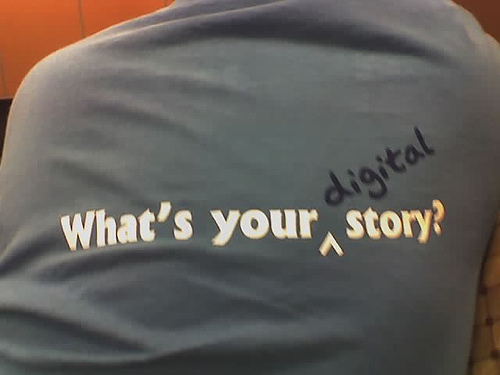Re-Mixing and Story Telling: From the Classroom to the Field
Small Photo
Photo

Last week, as my colleagues focused on Digital Security Awareness week, I traveled over to the west coast to attend the 2012 International Studies Association conference. This trip was a part of my graduate studies at Georgetown University (where I am pursing a Masters in Communication, Culture, and Technology), and while I was there I was reminded of the important relationship that exists between creating and editing stories and international development projects.
The panel I was a part of stemmed from a course (Technology, Culture, and Development) I took last semester. As a part of the class, students are asked to create a Cultural Identity Narrative, which is a 6 minute video that remixes a novel and a film from the developing world. The project allows students to create a story that explores a particular aspect of a culture, using the authors' and directors' words rather than their own. The project teaches students to think about how they construct narratives and understand how they chose to edit existing stories to create their own.
Taking this learning outside the classroom and into the professional space, this task of “editing” stories is one that we as development practitioners are often tasked with. Whether it is in drafting proposals, quarterly reports, or field reports - development practitioners take their experiences and translate them for colleagues and donors. How we draft these pieces will often be influenced by who our audience is and what we are trying to communicate. While this might seem to be an obvious take away - part of writing effectively is knowing your audience - the lessons are still important to remember, as development practitioners are often the link between the donor and the partners and must effectively be able to translate what is occurring on the ground.
This task of re-mixing and editing stories also relates to our work as an ICT team. Our task is to help our regional teams use technology tools effectively. So, we must take new or existing tools and methodologies, mix them with the political context, the technical capacities in hand, and the goals of the project to devise an effective ICT solution. Through this process we are gathering bits and pieces of information to create a holistic approach that effectively addresses the issue at hand. While this task is much different than making 6 minute re-mix videos as we do in the classroom, it shares the skills of takings information from multiple sources and tying it together to create a cohesive story, or in our case, a cohesive technology solution. This can be seen in our recent help with a crowdsourcing project where our team had to take into account a number of issues in order to ensure that the project was successful.
So while the lesson I learned participating at ISA is by no means novel, it reminded me of how important is to effectively be able to take pieces of information and combine them together in a way that can both effectively address the goals of a program and be communicated to donors.
The panel I was a part of stemmed from a course (Technology, Culture, and Development) I took last semester. As a part of the class, students are asked to create a Cultural Identity Narrative, which is a 6 minute video that remixes a novel and a film from the developing world. The project allows students to create a story that explores a particular aspect of a culture, using the authors' and directors' words rather than their own. The project teaches students to think about how they construct narratives and understand how they chose to edit existing stories to create their own.
Taking this learning outside the classroom and into the professional space, this task of “editing” stories is one that we as development practitioners are often tasked with. Whether it is in drafting proposals, quarterly reports, or field reports - development practitioners take their experiences and translate them for colleagues and donors. How we draft these pieces will often be influenced by who our audience is and what we are trying to communicate. While this might seem to be an obvious take away - part of writing effectively is knowing your audience - the lessons are still important to remember, as development practitioners are often the link between the donor and the partners and must effectively be able to translate what is occurring on the ground.
This task of re-mixing and editing stories also relates to our work as an ICT team. Our task is to help our regional teams use technology tools effectively. So, we must take new or existing tools and methodologies, mix them with the political context, the technical capacities in hand, and the goals of the project to devise an effective ICT solution. Through this process we are gathering bits and pieces of information to create a holistic approach that effectively addresses the issue at hand. While this task is much different than making 6 minute re-mix videos as we do in the classroom, it shares the skills of takings information from multiple sources and tying it together to create a cohesive story, or in our case, a cohesive technology solution. This can be seen in our recent help with a crowdsourcing project where our team had to take into account a number of issues in order to ensure that the project was successful.
So while the lesson I learned participating at ISA is by no means novel, it reminded me of how important is to effectively be able to take pieces of information and combine them together in a way that can both effectively address the goals of a program and be communicated to donors.
